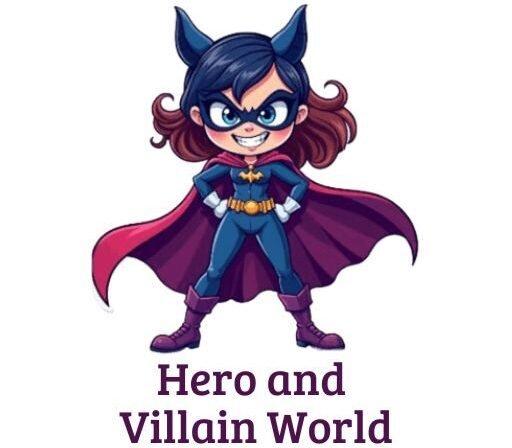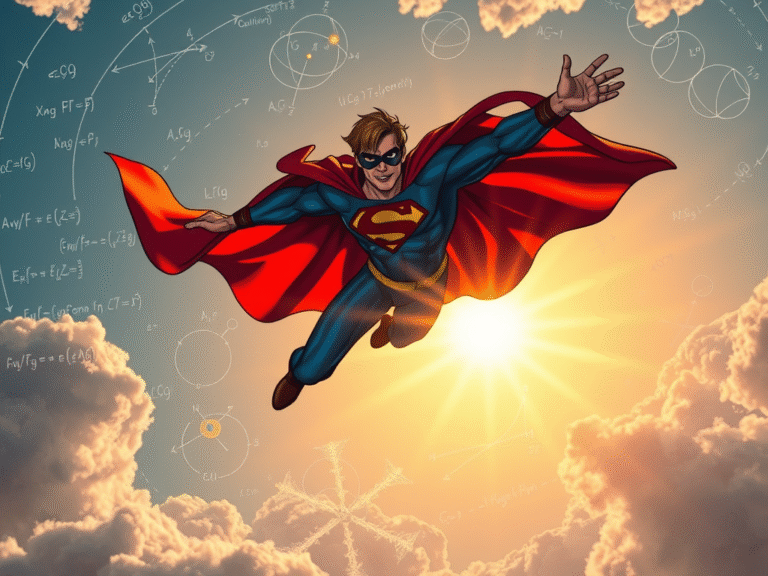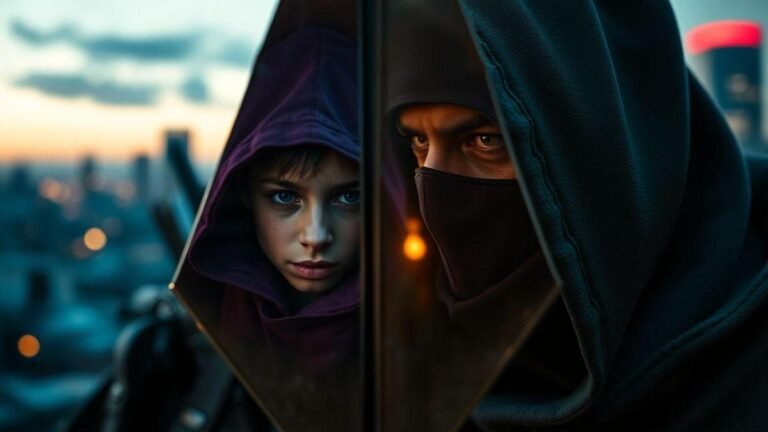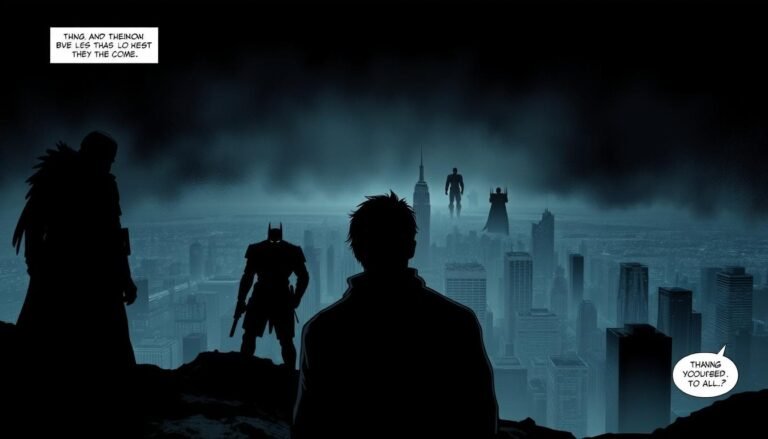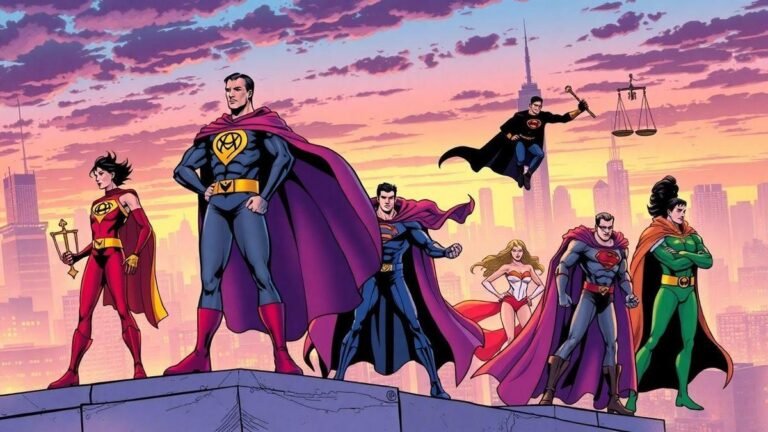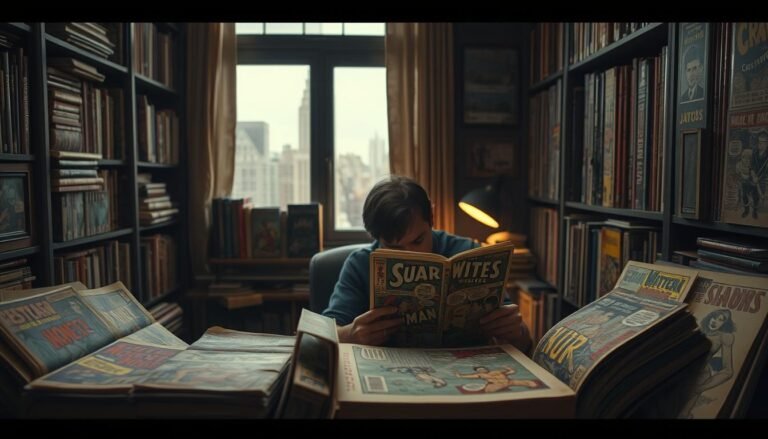Diversity Representation Modern Comics Today
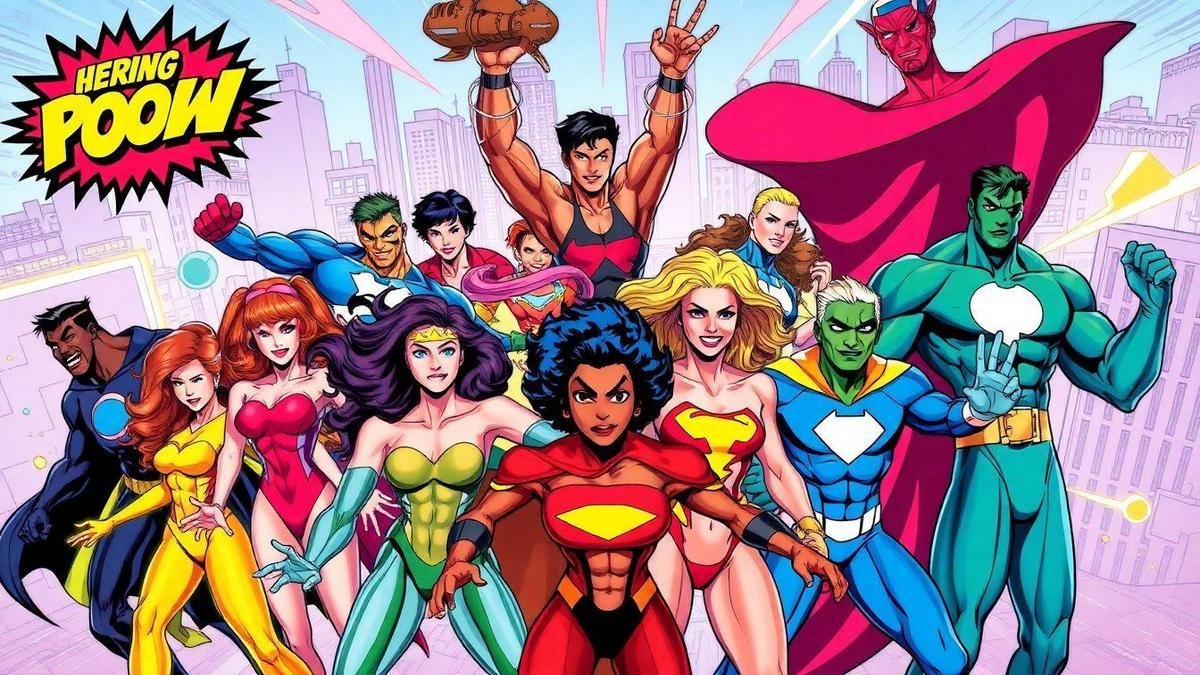
Diversity representation in modern comics today is more important than ever! This article explores how different backgrounds, cultures, and identities are shaping the stories we love.
Get ready to dive into why representation matters, celebrate diverse heroes, and understand how intersectionality enriches our favorite tales. From strong female characters to LGBTQ icons, you’ll see how these stories impact young readers and break down stereotypes. Let’s embark on this colorful adventure together!
Key Insights
- Modern comics showcase a variety of cultures.
- Superheroes today come from many backgrounds.
- Readers can see themselves in new characters.
- Stories explore real-life issues and challenges.
- Diversity makes comics more engaging and interesting.
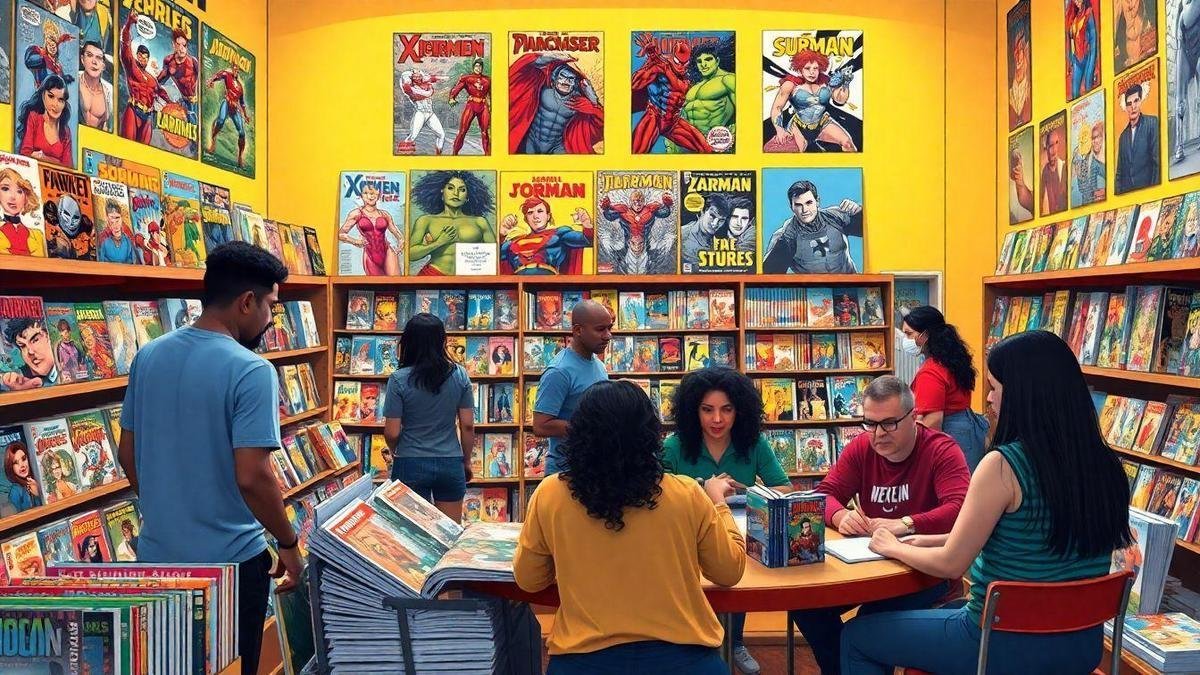
The Importance of Diversity in Comics
Why Representation Matters
When you pick up a comic, you want to see yourself in the stories, right? Representation is all about showing different people and cultures in a way that feels real. It helps everyone feel included, whether it’s a hero who looks like you or has experiences similar to yours.
This is especially important in modern comics today, where readers come from all walks of life.
Understanding Different Perspectives
Comics are a great way to explore different viewpoints. When you read a comic featuring a character from a background different than yours, you gain insight into their life. This not only broadens your mind but also fosters empathy. You start to understand the challenges others face and how they overcome them.
How Diversity Shapes Storytelling
Diversity in comics isn’t just a trend; it’s a powerful tool for storytelling. Here’s how it works:
| Element | Impact of Diversity |
|---|---|
| Character Depth | Diverse characters often have richer backstories. |
| Relatability | Readers connect more with characters they identify with. |
| Fresh Ideas | Different backgrounds bring new plot twists and ideas. |
| Social Issues | Comics can tackle real-world problems through diverse lenses. |
When stories include a variety of voices, they become more engaging and meaningful. You might find yourself laughing, crying, or even thinking deeply about issues that matter.
Characters of Color in Modern Comics
Celebrating Diverse Heroes
In today’s comics, diverse heroes are taking center stage! It’s exciting to see characters from various backgrounds, cultures, and experiences. These heroes show that anyone can be a hero, no matter where they come from. They inspire you to dream big and embrace your own story.
Impact on Young Readers
When young readers pick up a comic book, they want to see themselves in the pages. Characters of color help children feel included and understood. By seeing heroes who look like them, kids can believe that they too can conquer challenges. This representation can spark conversations at home and in classrooms about diversity and acceptance.
Examples of Iconic Characters
Here’s a quick look at some iconic characters that showcase diversity representation in modern comics today:
| Character | Publisher | First Appearance | Background |
|---|---|---|---|
| Miles Morales | Marvel | Ultimate Fallout #4 | Afro-Latino Spider-Man |
| Ms. Marvel (Kamala Khan) | Marvel | Captain Marvel #14 | Pakistani-American superhero |
| Black Panther | Marvel | Fantastic Four #52 | King of Wakanda, African hero |
| John Stewart | DC Comics | Green Lantern #87 | African-American Green Lantern |
These characters are not just figments of imagination; they represent real experiences and stories. They show the importance of diversity representation in modern comics today.
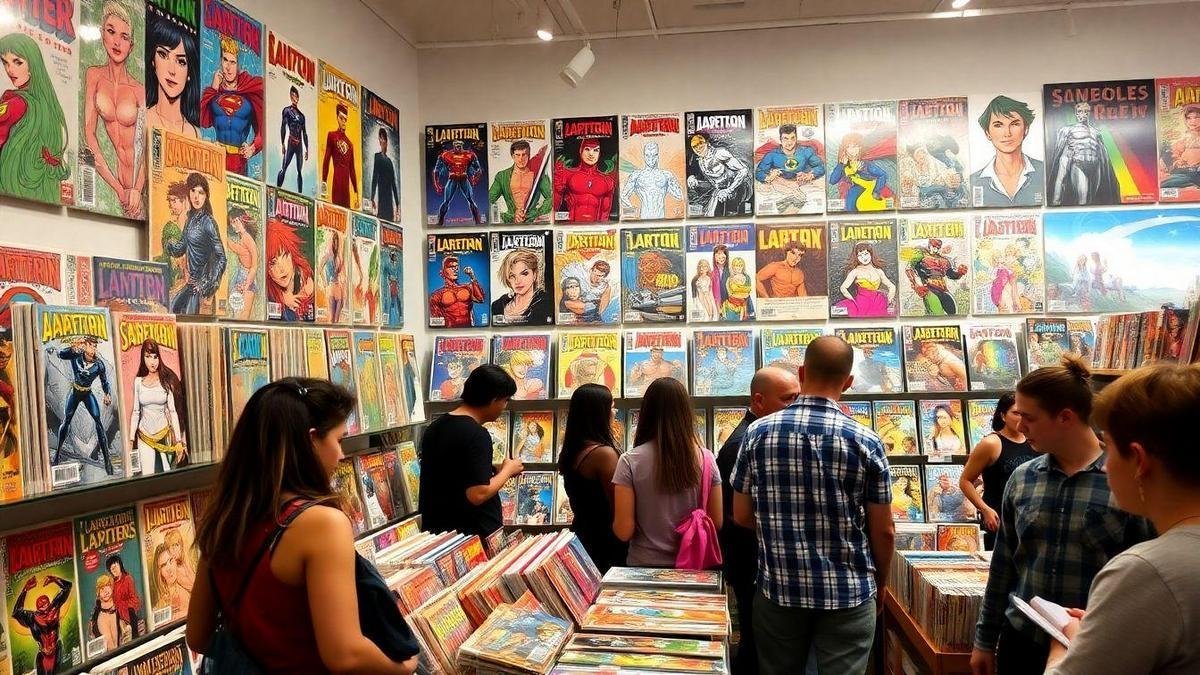
LGBTQ Representation in Comics
Breaking Stereotypes
Comics have long been a canvas for imagination and storytelling. However, they also play a crucial role in shattering stereotypes. In the past, LGBTQ characters were often one-dimensional or caricatures. Today, they are multi-faceted and realistic, reflecting the diversity of the community.
You might find characters who are not just defined by their sexuality but have rich backstories, dreams, and struggles. This shift helps readers, especially young ones, to see that everyone has their own story, no matter who they love.
Real Stories, Real Lives
When you dive into modern comics, you’ll discover real stories that resonate with many. These tales often mirror the lives of LGBTQ individuals, showcasing their challenges and triumphs.
For example, comics like “The Avant-Guards” show how friendships blossom in unexpected ways, while “Laura Dean Keeps Breaking Up with Me” highlights the complexities of young love.
These stories can help you understand different perspectives and experiences, making them powerful tools for empathy and connection.
Notable LGBTQ Characters
Here’s a quick look at some notable LGBTQ characters in comics:
| Character Name | Comic Series | Orientation |
|---|---|---|
| Harley Quinn | Batman: The Animated Series | Bisexual |
| Northstar | Alpha Flight | Gay |
| Iceman | X-Men | Gay |
| Batwoman | Detective Comics | Lesbian |
| America Chavez | Young Avengers | Lesbian |
These characters are just the tip of the iceberg! They play significant roles in their stories, showing that love and identity come in many forms.
Women in Comics: A Growing Presence
Female Creators Making Waves
Women are making a splash in the comic book universe! From writers to artists, their impact is significant. These talented women bring fresh ideas and perspectives, reshaping the industry.
For example, creators like Marjorie Liu and G. Willow Wilson have crafted stories that resonate with many readers. Their work not only entertains but also inspires. You can explore more about their contributions and the impact of various comic artists here.
Here’s a quick look at some notable female creators:
| Creator | Notable Work |
|---|---|
| Marjorie Liu | “Monstress” |
| G. Willow Wilson | “Ms. Marvel” |
| Fiona Staples | “Saga” |
| Kelly Sue DeConnick | “Captain Marvel” |
Strong Female Characters
When you think of comic book heroes, strong female characters are stepping into the spotlight. Characters like Wonder Woman, Captain Marvel, and Storm are not just sidekicks anymore; they are leading the charge! These heroines show that women can be powerful, smart, and brave.
The evolution of these characters is a testament to the changing landscape of comics, much like the discussions around moral choices in Wonder Woman.
Here’s a list of some strong female characters:
- Wonder Woman: The Amazonian warrior who fights for justice.
- Captain Marvel: A former Air Force pilot turned cosmic hero.
- Harley Quinn: A complex character who mixes humor with strength.
- Storm: A mutant with the power to control the weather.
The Shift Towards Inclusivity
The comic book industry is changing. There’s a growing focus on diversity representation in modern comics today. This shift means more stories reflect a variety of backgrounds, experiences, and identities. It’s about time! Readers want to see characters they can relate to, and this inclusivity is helping to create a richer tapestry of stories.
More comics are featuring characters from different cultures, genders, and orientations. This change is not just good for the industry; it’s good for everyone. It opens doors for new stories and ideas, making comics a more welcoming place for all.
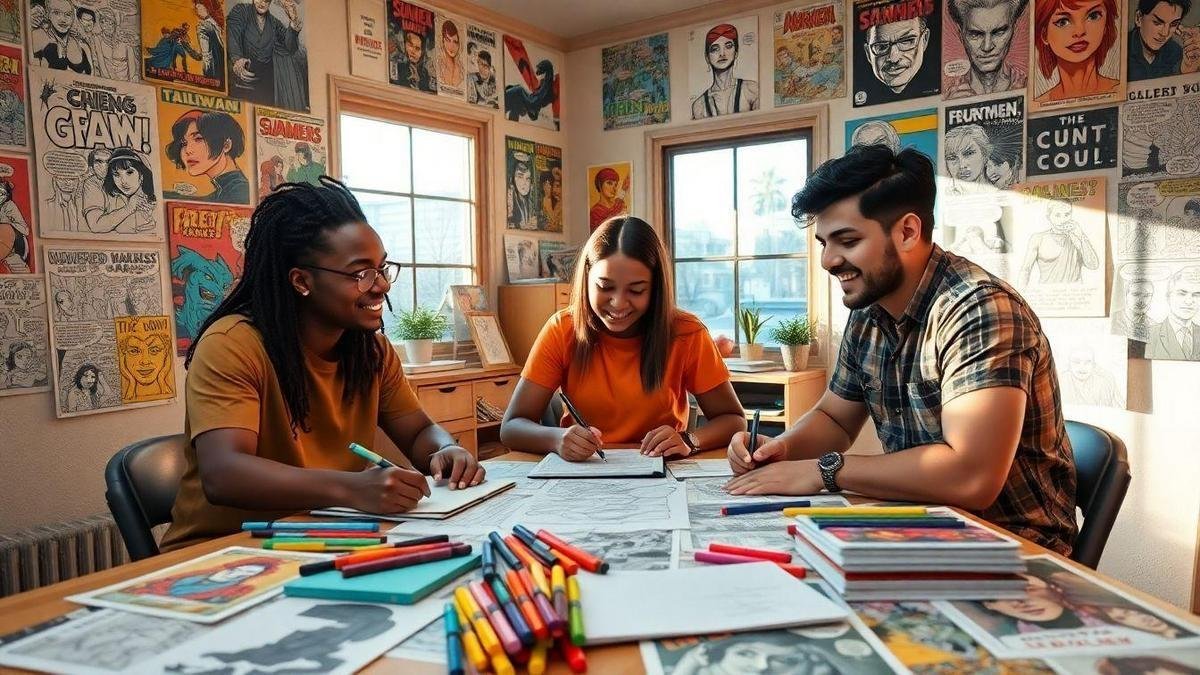
Multicultural Comic Creators
Voices from Around the World
Comics are a wonderful way to share stories, and they come from all corners of the globe. Each creator brings their own flavor, influenced by their culture, traditions, and experiences. When you read comics from different countries, you dive into new worlds filled with characters that reflect the lives of people around you.
For example, artists like Naoko Takeuchi from Japan created Sailor Moon, which not only tells a story of friendship and love but also showcases Japanese culture.
On the other hand, Marjane Satrapi from Iran offers a glimpse into her life through Persepolis, showing the impact of war and identity. These creators help you see the world through their eyes, making comics a rich tapestry of voices.
The Influence of Culture on Comics
Culture plays a huge role in shaping the stories we see in comics. Different traditions, values, and beliefs can change how a story is told.
For instance, superhero comics in the United States often focus on individualism, while comics from other countries might highlight community and family ties. The impact of these cultural themes can be seen in various works, including X-Men’s exploration of prejudice.
Here’s a quick look at how culture influences comics:
| Country | Comic Example | Cultural Theme |
|---|---|---|
| Japan | One Piece | Adventure and friendship |
| Brazil | Turma da Mônica | Humor and childhood |
| South Africa | Kwezi | Heroism and social justice |
| Mexico | La Llorona | Folklore and tradition |
Each comic tells a story that connects with its audience. By exploring these influences, you can appreciate the richness of comics even more.
Celebrating Diverse Storytellers
It’s important to celebrate the diverse storytellers in the comic industry. These creators are not just drawing pictures; they are sharing their experiences and backgrounds. Their stories help pave the way for better representation in modern comics today.
When you support diverse comics, you’re encouraging more voices to be heard. This means more stories that reflect the multifaceted world we live in. You might find a new favorite character or story that resonates with you on a personal level.
By reading and sharing these comics, you’re helping to create a space where everyone can see themselves in the stories they love.
Intersectionality in Comics
Understanding Multiple Identities
Comics today are a vibrant tapestry of different stories and characters. When we talk about intersectionality, we mean how various identities—like race, gender, and sexuality—interact and shape a person’s experience.
Imagine a character who is not just a superhero but also a woman of color and part of the LGBTQ community. This character faces challenges that are different from those of a white male superhero. By understanding these multiple identities, you can see how they influence the character’s journey.
The Power of Inclusive Narratives
Inclusive narratives in comics are like a breath of fresh air. They allow readers from all walks of life to see themselves in the stories.
When comics include characters with diverse backgrounds, it helps break down barriers. You can connect with a hero who shares your struggles or dreams. This connection can be powerful and uplifting.
Here’s a quick look at why inclusive narratives matter:
| Reason | Explanation |
|---|---|
| Representation | Helps readers feel seen and heard. |
| Empathy | Encourages understanding of different experiences. |
| Diversity | Enriches storytelling by adding depth and variety. |
How Intersectionality Enriches Stories
When comics embrace intersectionality, they create layered stories that reflect real life. Characters are not just one-dimensional; they have backgrounds, families, and cultures that influence their actions. This richness makes the stories more relatable and engaging.
For example, think about Ms. Marvel, who is a Pakistani-American teenager. Her journey isn’t just about fighting villains; it’s also about navigating her cultural identity and the expectations of her family. This blend of experiences makes her story more compelling.
In modern comics today, diversity representation is essential. It’s about painting a fuller picture of society. The more varied the characters, the more readers can find someone they relate to.
Conclusion
In conclusion, diversity representation in modern comics today is not just a passing trend; it’s a vital force that shapes the stories we cherish. By embracing different backgrounds, cultures, and identities, comics are becoming richer, more relatable, and ultimately, more enjoyable for everyone.
As you journey through these colorful pages, remember that representation matters—it helps you see yourself and others in powerful ways.
So, whether you’re cheering for a strong female hero, connecting with an LGBTQ icon, or exploring the intersectionality of diverse characters, you’re part of a movement that celebrates the beauty of our differences.
Keep diving into the world of comics, and don’t forget to explore more articles at Hero and Villain World for insights that will keep your passion for diversity alive! Happy reading!
Frequently Asked Questions
Diversity representation in modern comics today means showing various backgrounds, cultures, and identities. It includes different races, genders, sexual orientations, and abilities. Comics want everyone to see themselves in the stories.
Diversity is important in comics because it helps everyone feel included. It shows different experiences and teaches readers about others. It also makes stories richer and more interesting.
Diversity has changed a lot! In the past, many comics only featured white male heroes. Now, you see heroes from all kinds of backgrounds. This change reflects our world better and reaches more readers.
Yes! Many modern comics today focus on specific cultures. They showcase unique stories, traditions, and experiences. This gives you a chance to learn about and appreciate different backgrounds.
You can find diverse comics by checking online lists and recommendations. Look for publishers that focus on diversity. Your local comic shop may also have a section for diverse titles. Happy reading!
